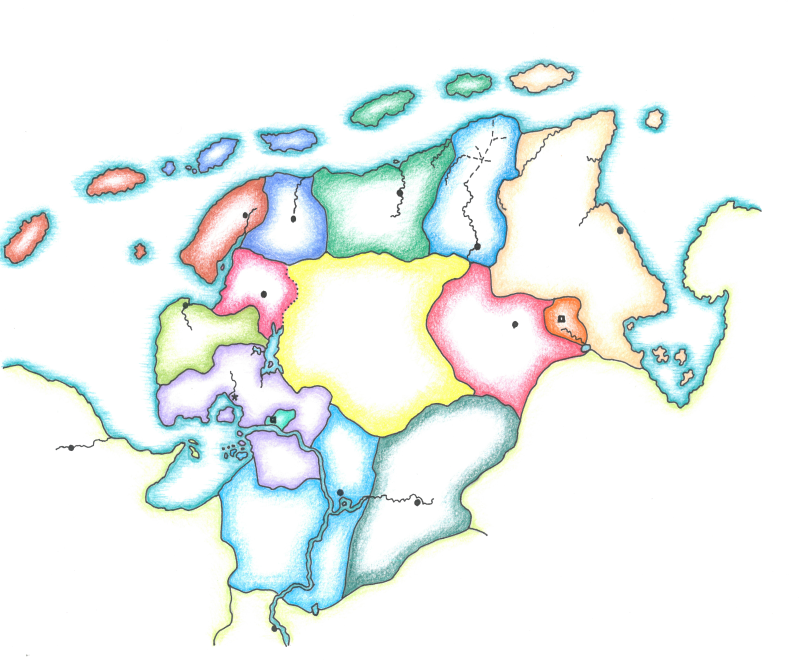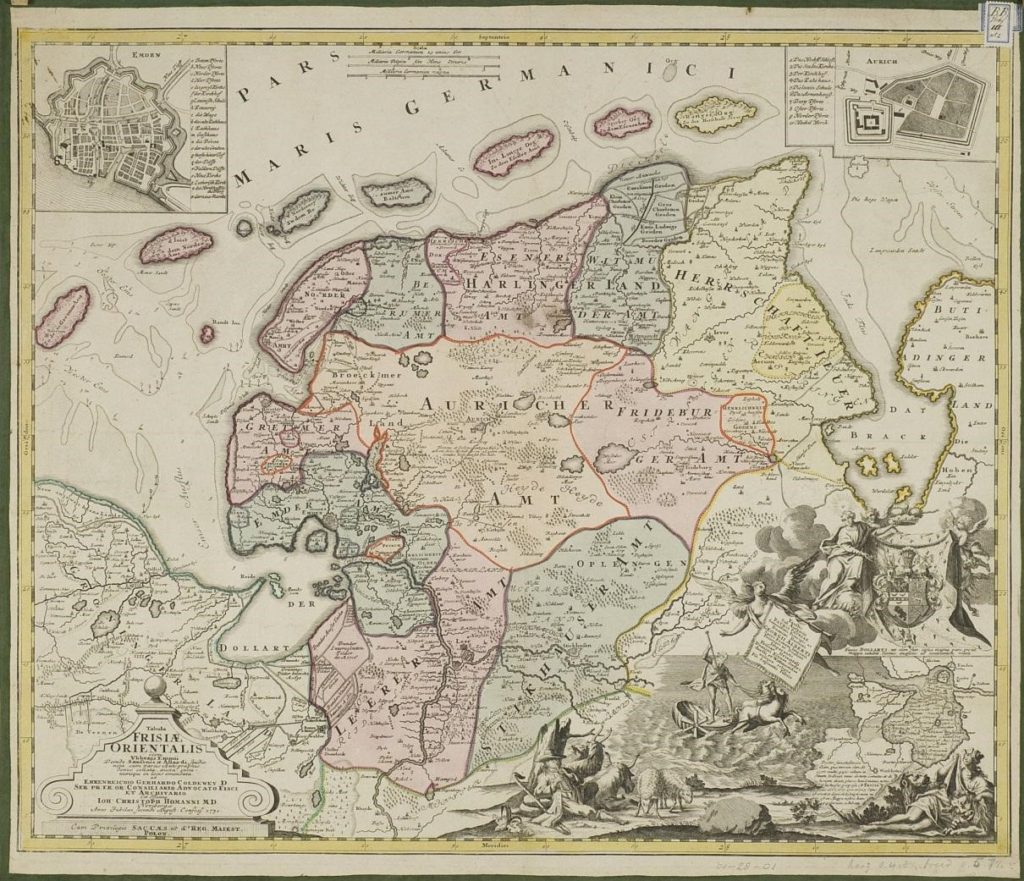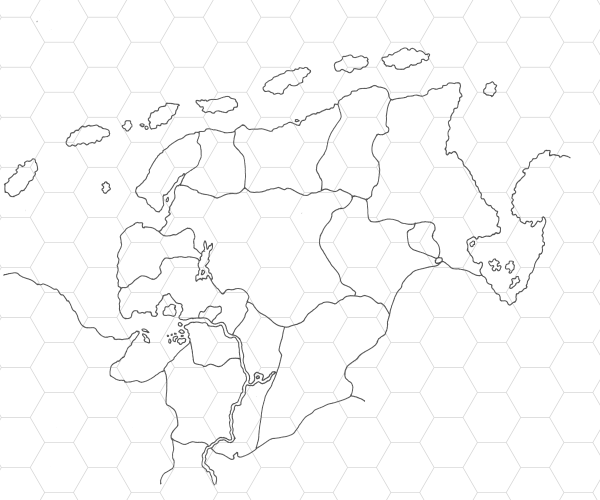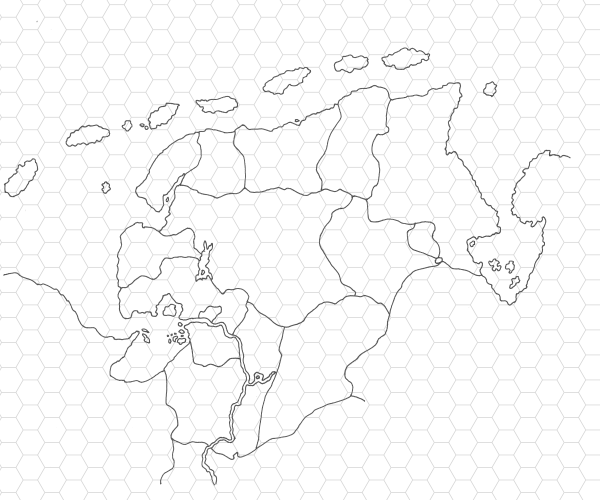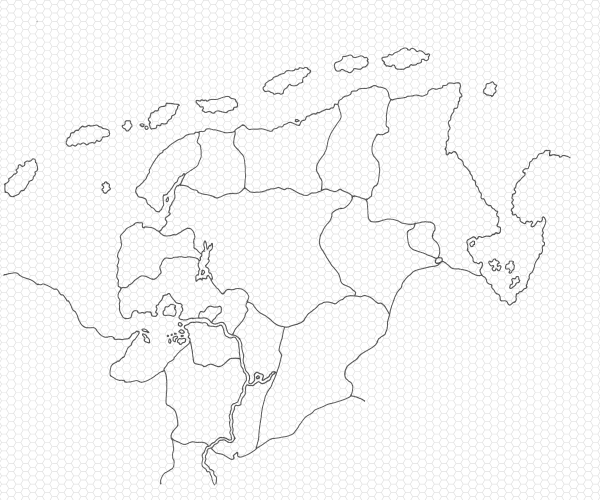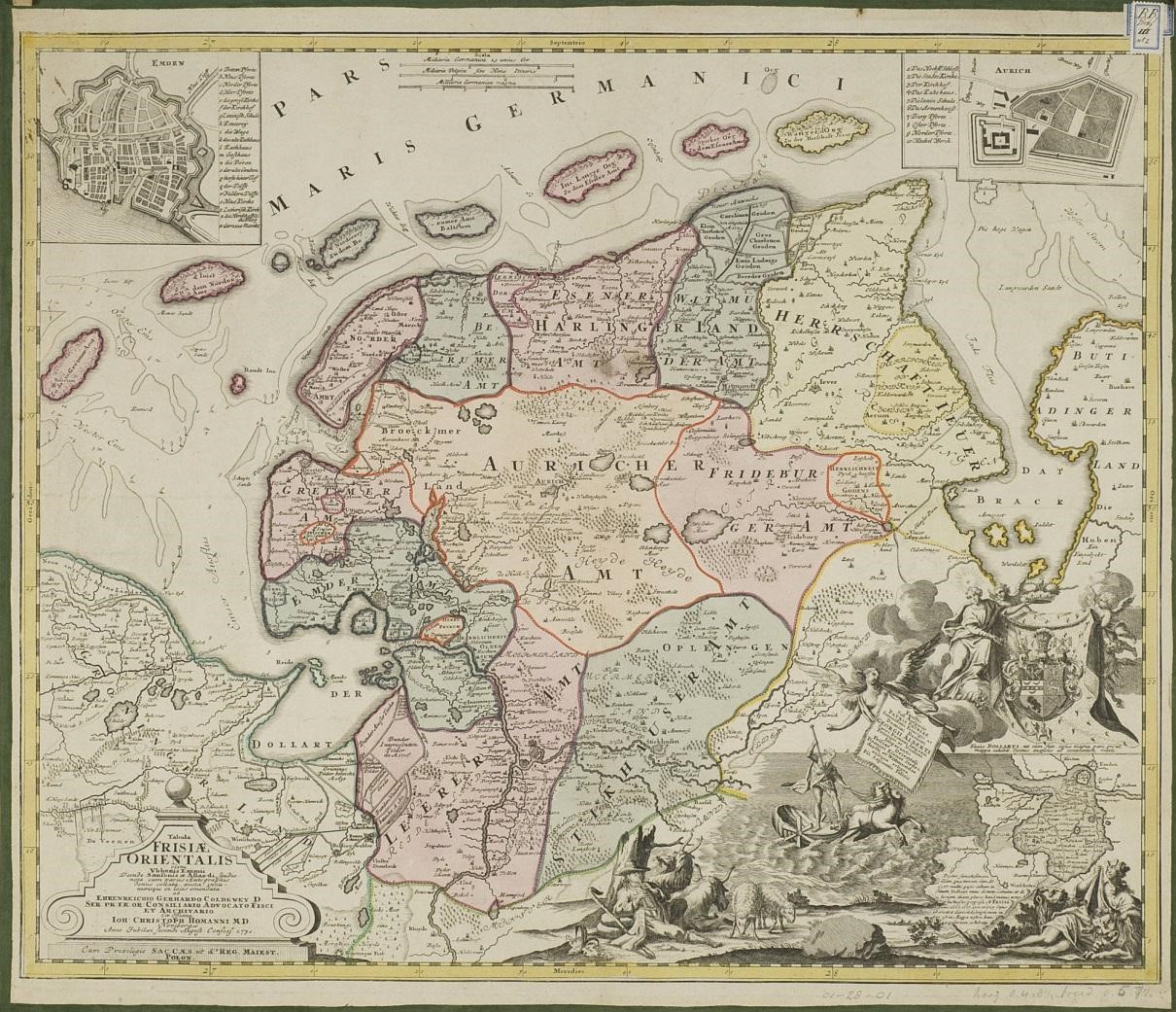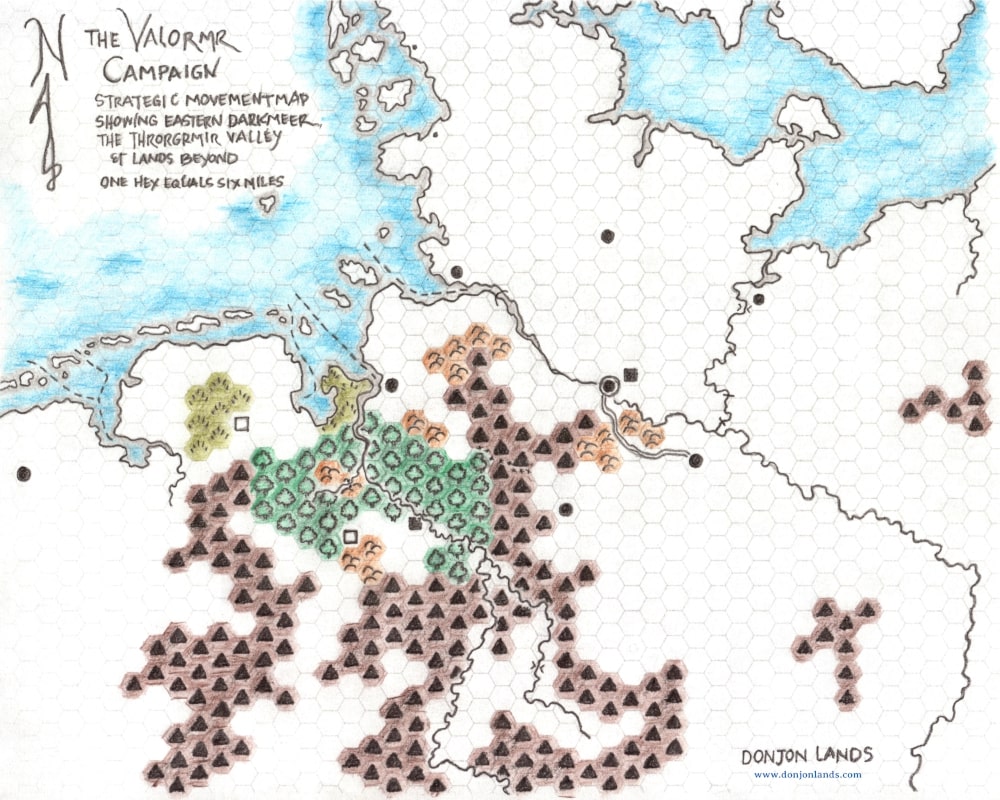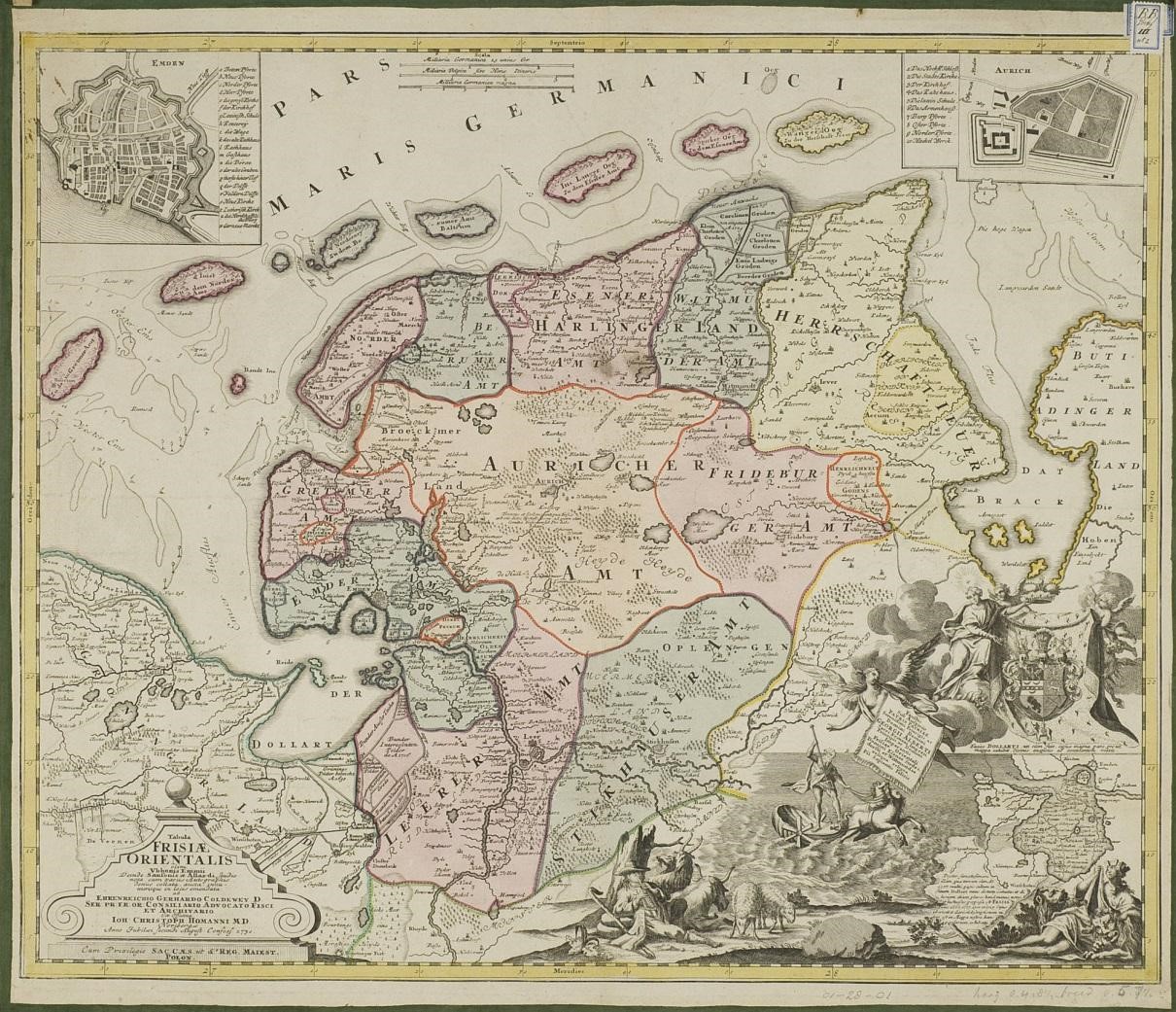In three issues of The Strategic Review, Gary Gygax describes the spear and its kin: the javelin, lance, and pike, for fantasy adventure gamers (Vol. 1, No. 1, 1975) and details several other pole arms, giving use, length, and a drawing of each (Nos. 2, 4). He revisits the topic in a 1979 Dragon article, “The Nomenclature of Pole Arms” (#22), which is reprinted in Best of Dragon Volume II (1981) and, as an appendix, in AD&D Unearthed Arcana (1985). The corpus is often called Gygax’s “treatise” on pole arms.
The Pandemonium Society recognized the early rendition as a useful resource. Study of the historical use of pole arms, notably the pike, leads inevitably to the phalanx formation and house rules such as those Phenster describes in “Phalanx Fighting.” When we realize we can get two or more weapons in the same frontage normally reserved for one, the tactical advantage is clear.
Phalanx Formation [E]
Whatever its historical meaning, a phalanx, for the Pandemonium Society, is a combat formation in which a spearman—or any combatant armed with a long, thrusting weapon—fights from behind an ally. The phalanx formation is best achieved when the opponent is prevented from closing with the spearman by some means, multiple allies in the fore rank for example.
A pole arm at least eight feet long can attack through one rank; 12 feet or longer, through three ranks; 16 feet, four ranks; 20 feet, five.
Additional Weapons
Phenster’s article mentions two weapons not given in Holmes. For completeness sake, I give them here, each with its weapon class, qualities (see “Weapon Damage and Attack Priority”), and cost, the last of which I determined by my own fiat.
Short Sword [E]
Length: 1-1/2' to 2', weapon class: ordinary (damage: d6), weapon quality: short, cost: 7 g.p.
Long Spear [E]
Length: 10' to 15', weapon class: ordinary (damage: d6), weapon quality: long, two-handed, cost: 3 g.p.
Spear Against Charging Opponents [E]
Any spear versus a charging opponent adds 1 to damage. Set (as against the ground or a wall) versus a charging opponent, it adds 2 to damage.
Maximum Weapon Length in the Dungeon
Two options for limiting overlong weapons in the dungeon’s confines are given here. The latter gets tedious in execution, therefore, I put it in the [P] Pandemonium category (see “About the Reedition of Phenster’s”).
Maximum Length by Weapon Type [E]
In Greyhawk, OD&D Supplement I, Gygax prohibits weapons in the dungeon by type: pikes and pole arms “are not usable in dungeons as a general rule due to length” (15). This works well enough in a campaign with dungeons of usual dimensions.
Maximum Weapon Length Equals Ceiling Height [P]
Hazard’s ceiling height rule is more specific, and Phenster elaborates on the penalties. Carrying a weapon longer than the dungeon’s standard ceiling height is awkward and makes more noise. The DM should reduce the party’s movement to three-quarters normal rate and increase the frequency of wandering monster checks.
Close Order, Ranks, and Quarters
Phenster uses three terms that may be unfamiliar to adventure gamers without military or wargame experience. I define each as I interpret the text, though—still shy of the battle grid—I hesitate to give specific distances. Let’s assume that the normal distance in each case is five feet. The “close” modifier, then, implies some lesser distance.
Close Order: Refers to the distance between allies (left and right) in a rank.
Close Ranks: Refers to the distance between ranks (before and behind). A phalanx formation assumes close ranks.
Close Quarters: Refers to the distance between facing opponents—that is, they are standing toe-to-toe. The situation is achieved by move, when closing to melee, or maneuver, if already engaged (see Maneuver [E]). In close quarters, opponents may attack only with a short, thrusting weapon (a dagger meets these criteria). Otherwise, one or the other may step back by maneuvering (space allowing), or one may push the other (see Shield Wall, below).
Note: As “maneuver” occurs after the melee round in no particular order, when a combatant maneuvers into close quarters, the opponent, if space allows, may also maneuver to step away at the same time.
Shield Wall [E]
Multiple attacks against a single opponent may draw us into a phalanx, but in the shield wall the formation reaches its highest potential. After opposing forces have molested each other with pointy sticks, each side digs in to shove the other backward, employing the weight of its entire phalanx. The goal is to break the opponent’s formation. Once their formation is broken, troops tend to panic, leaving the field to the victors.
To form a shield wall, at least two shield-bearing combatants must be in close order, shields touching if not overlapping.
Shield Wall AC Bonus [E]
Each member of a shield wall, except the rightmost, benefits from the shield of the member on the right, gaining an additional +1 to AC.
Tortoise: Phenster mentions that rear ranks may hold their shields overhead against missile fire. The action is, however, cosmetic, as they would already count the shield’s bonus in their AC.
Shield Wall Push [P]
A shield wall, as described below, gets away with a lot of footwork. Previously eschewing Holmes’s static combat, Phenster allows a combatant, even while engaged in melee, to move but “just not very far” (L’avant garde #35, see also Maneuver [E]). A successful push can easily move both sides quite far. Perhaps the Pandemonium Society used other rules, unpublished, in addition to those in the article. As is, some extrapolation is required, which I do. For its ambiguity, I class Push in [P] Pandemonium. DMs should be prepared to adjudicate.
A shield-bearing rank, whether part of a phalanx or not, or an individual may, following the melee round (see Maneuver [E]), step into close quarters with an opponent and push the opponent backward.
- Each side rolls dice equal in size and quantity to their total hit dice. All troops in the formation, no matter the number of ranks, are considered. In the case of large forces, the number of dice may be reduced proportionally. For example, 100d8 versus 80d6 becomes 10d8 versus 8d6.
- The side with the higher result pushes the other side backward a number of feet equal to the positive difference. If a formation is pushed backward a distance equal to its combat move rate in a single round, or if it is pushed a total of three times its move rate, the formation is broken.
- A broken formation must immediately make a morale check (NPCs only) with a -1 penalty. A failed check indicates a retreat: members run away (combat move ×3) and cannot defend (-2 AC). On a successful check, the force withdraws: members can defend (but not attack) while moving at combat speed to the rear. Once withdrawn, the phalanx is considered reformed at the beginning of the next round.
